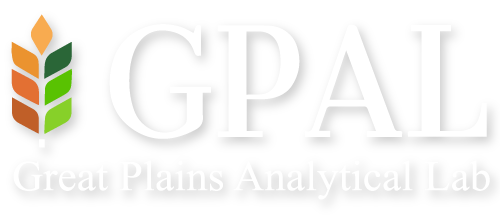Unlocking Quality: The Critical Role of PPO Testing in Wheat for Product Performance
Polyphenol oxidase (PPO) testing in wheat is essential for preserving product quality—especially by preventing time‑dependent darkening and discoloration in wheat-based foods like noodles, tortillas, and whole-wheat breads. At Great Plains Analytical Laboratory (GPAL), we lead the United States in PPO testing for wheat and flour, helping mills, bakers, and breeders ensure superior appearance and consumer satisfaction.
Why PPO Testing Matters From an Application Perspective
- Visual Quality Is a Key Consumer Driver
PPO causes enzymatic browning in processed wheat foods. In consumer-sensitive products like Asian noodles, even minimal discoloration can lead to rejection—most notably in markets prioritizing bright color and consistency. - Scientific Insights Validate the Strategy
A USDA‑funded project examined how PPO contributes to noodle discoloration and identified specific PPO isozymes that drive this effect NIFA Reporting Portal+3NIFA Reporting Portal+3NIFA Reporting Portal+3NIFA Reporting Portal. Their findings underpin current breeding and testing strategies aimed at minimizing discoloration in wheat-derived products. - Breeding for Better Color, Sustainability, and Profitability
By targeting specific PPO isozymes, breeders can develop low‑PPO wheat varieties that enhance the visual appeal of products and reduce waste—boosting marketability and supporting sustainable agriculture NIFA Reporting Portal.
From Wheat to Quality Finished Goods: GPAL’s PPO Testing Services
PPO Testing in Wheat and Flour
Wheat kernel PPO testing has industry benchmarks, but flour PPO lacks standardized values. GPAL fills that gap with internal thresholds guiding flour interpretation:
- Below 0.4 = Low PPO
- 0.4–0.6 = Medium PPO
- 0.6–0.8 = High PPO
- Above 0.8 = Very High PPO
These brackets help our milling and food manufacturing clients optimize wheat blends and extraction levels for final color stability.
Influencing Milling and Extraction Decisions
- Low PPO Kernels are vital for noodles and other color-sensitive applications.
- High PPO Wheat, when milled at low extraction, can still achieve low PPO flour—a key blending tool when whole wheat flour might otherwise discolor.
Accurate PPO data informs smarter milling and blending choices that preserve product brightness and market appeal.
Supporting Breeders, Millers, and Food Developers
GPAL works across the supply chain to guide PPO-informed decisions:
- Helping breeders assess PPO traits in new varieties
- Assisting mills in developing low‑PPO blends
- Empowering bakers and noodle makers to select flours with optimal color stability
Real-World Applications: What the USDA Study Reveals
The USDA project focused on Asian noodles—a category where even slight PPO-induced discoloration undermines consumer preference. Key findings:
- Certain PPO isozymes strongly correlate with noodle color degradation.
- Brightness of noodles across diverse wheat lines and environments can be used to guide breeding toward better performance NIFA Reporting Portal.
These results have practical implications:
- They help breeders target low-PPO genotypes.
- They equip processors with data to understand why certain wheat lots discolor—and what to avoid.
Why GPAL Is Your Go-To for PPO Testing
GPAL is the premier PPO testing lab in the U.S., offering:
- Flour and Whole Grain Testing: Fast, accurate PPO analysis with interpretation tailored to kernel and flour.
- Industry-Aligned Reporting: We translate PPO data into actionable intelligence for milling, baking, and breeding applications.
- Thought Leadership: With decades of cereal chemistry experience, we guide clients toward optimal wheat quality solutions.
